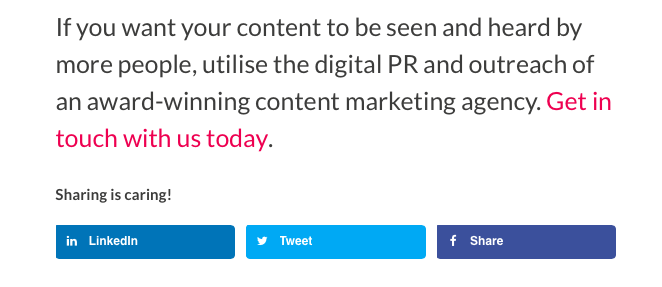Google’s 2024 Core Update and its New Spam Policies
SEO

02 / 08 / 19
To make a success of any content marketing campaign, link building is imperative. Not only do search engines use links to discover new web pages, they also help determine how well a page should rank in their results.
But in spite of its importance, link building is just one piece of the larger SEO puzzle which includes a quality on-page content strategy.
Seeing as there is so much to consider, it’s easy to become obsessed with the off-page aspects and completely neglect the on-page elements.
Well, if the content your hard-earned backlinks point towards doesn’t hit the mark with users, their attention and engagement levels will drop. In turn, this could reduce session duration and increase bounce rates, signalling to Google that your content isn’t the best answer to the question that the searcher is asking.
Soon, you could start slipping down the SERPs and the power from those fantastic links could be lost.
Thankfully, you can avoid this worst-case scenario by incorporating some of the following into your ongoing content plan
Given the significance of back links, it should come as no surprise that internal linking is key to on-page SEO. Along with encouraging visitors to consume even more of your content, internal linking also tells search engine spiders about other pages on your website.

We managed to fit three internal links above the fold in this recent blog post.
Best practice for internal linking includes:
Because metadata is used to tell search engines what your page is about in the most concise and accurate way possible, it makes sense to optimise them. According to Moz, meta titles have “long been considered one of the most important on-page SEO elements.”
Here’s a checklist to abide by when writing your meta titles:
Alt-text is another way for search engines to understand your page’s content, and it makes your website more accessible for people using screen readers as well.
Did you know: Another benefit of alt text is that it can encourage your images to show up in Google Image search – another great way to drive extra organic traffic to your site.

Popular WordPress plugin Yoast features alt tag and title tag optimisation.
Accessibility shouldn’t be an afterthought when it comes to SEO and can actually deliver a number of additional benefits – ensure on-page elements aren’t being forgotten about, increase your site’s popularity, improve session durations and reduce bounce rates.
Keyword mapping is where you assign targeted keywords to specific pages of your website based on research.
The ultimate aim here is to avoid keyword cannibalisation, which can confuse search engines and deter them from ranking your content at all.
It’s also a great way to discover which landing pages to optimise and what future content to build for better SEO performance.
Don’t forget that each page of your website represents an opportunity to convert customers.
If you’ve built links on relevant websites where your target audience is ‘hanging out’, you’ll already be driving traffic that is highly likely to convert, therefore, you should have at least one call-to-action (CTA) on every page to make it as easy as possible for users to continue their journey with you.

Practising what we preach here at JBH.
HubSpot recommends that your website should have a mix of CTAs for different stages of the ‘flywheel’ – a new way of looking at the traditional sales funnel that attracts, engages and delights everybody passing through your site, from strangers and prospects to customers and promoters.
Just because you’ve published an amazing piece of content, which ticks every on-page SEO box imaginable, doesn’t mean to say you can simply leave it be and wait for Google to provide an appropriate ranking reward.
Facts and figures included in your article could change over time or new pieces of data might reinforce your message.
Retrospective editing lets Google know that you’re constantly trying to provide your audience with the best answer to their question, which is exactly what its algorithm strives for.
At the end of the day, the difference between a prominent and poor ranking position will be the actual content on your page.
Three questions to ask when writing or retrospectively editing your content:
Therefore, it makes sense to prioritise content creation from the get-go.
This means identifying an idea your audience would find valuable, gathering as many insights as possible, and building a page that combines copy, images and video to great effect.